文字サイズ
Tokushima Prefecture
The shipping of spring carrot reaches its peak between
mid-March and mid-June. Seeds are sowed in the cold period until the end of December, and cultivated in greenhouses. Under the favorable location with water resource and alluvial soil, they survive in dry, soft soil without the need of artificial water supply and become sweet, soft spring carrots.
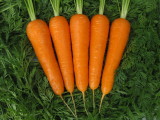
At an early stage, shiitake mushrooms were produced using fungiculture instead of using logs such as oaks in Tokushima Prefecture, and it enabled producers to harvest all year round.
Currently, almost all production has been based on the fungiculture and Tokushima’s production has reached the top in Japan.
Approximately 80 per cent of the production is shipped to the markets in Keihanshin area (Kyoto, Osaka and Kobe), which have the largest market share in the area.
Raw shiitake mushrooms produced in Tokushima Prefecture are thick and aromatic, and are suitable for any types of cuisine such as Japanese, Western and Chinese. They can be grilled simply to enjoy their flavor.
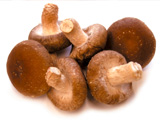
Yuzu are very popular due to their fresh aroma and characteristic sourness.
“Toji Yuzu” (yuzu for winter solstice), whose demands are the highest in December, have a good reputation. The production volume is the second highest in Japan. Tokushima Prefecture is highly valued as a rare area producing yuzu all year round: storable yuzu sold in spring and vivid green “Aodama” (blue/green ball) harvested in summer. The most well-known type of yuzu is “Kito Yuzu” cultivated in Naka-cho.
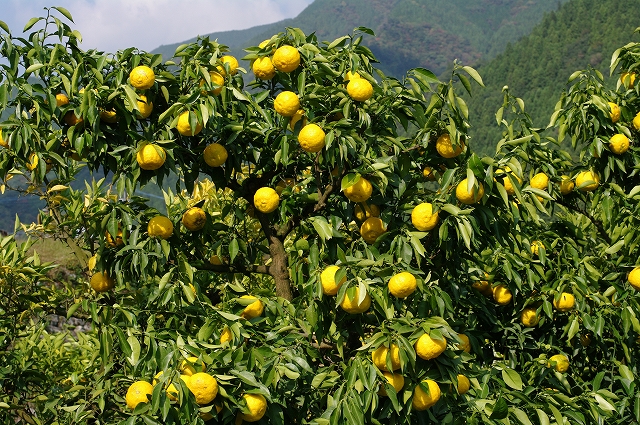
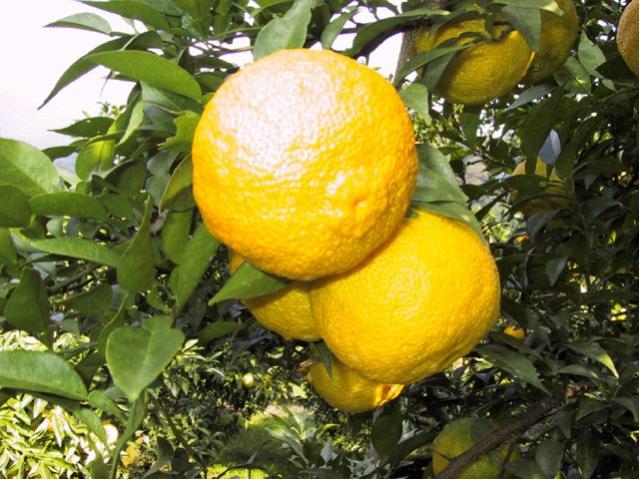
“Bichu type” and “Daruma type” lotus roots are cultivated around downstream of the Yoshino River in Tokushima Prefecture.
They have a characteristic aroma, whiteness, crunchy and crispy texture. Combining open-field cultivation, greenhouse cultivation and plastic tunnel cultivation enables lotus roots to be sold almost all year round.
Tokushima has the second largest lotus root crop in Japan. Approximately 90 per cent of the market share at Osaka Central Wholesale Market is staggering.


It features a white color and plump, rounded outline. In order
not to become yellow due to sunlight, it is shipped with its outer leaves intact. Good quality cauliflower has no gaps between the buds. It is cultivated gently, as it is damaged easily when it is rubbed together.
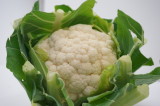
Rape flower is a food ingredient to get a taste of spring ahead of the season. Tokushima is proud of being one of the leaders in shipment of rape flowers in Western Japan. Sowing seeds starts in September and are harvested in November in Tokushima’s fertile soil under the mild climate. Young rape flowers with their buds tightly shut are harvested. The bitter taste unfolded from soft leaves is characteristic. Rich in vitamins, minerals, dietary fiber, which are hoarded to bloom flowers. From a side dish (boiled seasoned vegetables) to ajillo (one of Spanish tapas), it can be used for Japanese and Western-style dishes.
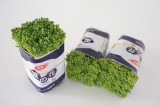
Tokushima’s satsuma is known as sweet and tasty. It is
shipped throughout the year: satsuma grown in greenhouse between April and September; early satsuma between October and December; and stored satsuma between January and April.

You can see pear orchards from the car here and there in the
north of Tokushima Prefecture. This area produces a lot of pears such as Kosui with plentiful sweet juice and Hosui with mild sour taste and crisp texture. Pears high in sugar content can be harvested in the beginning of August, thanks to the long hours of sunlight. The harvest is at its peak until the beginning of September. Eating a mouthful of well-cooled pear eases your thirst, filling your mouth with melting sweet juice.
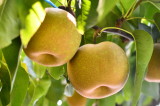
Its vivid green and fluffy appearance makes your table
glamourous. Rich in nutrition such as vitamins and minerals, and its stem is also edible. Being more popular in recent years, the area of broccoli fields has expanded and is ten times as large as 10 years ago in the production areas in Tokushima Prefecture. Triple cropping system has become possible by planting different types of broccoli, and it can be shipped nearly all year round except midsummer. To distinguish fresh ones, look for ones with small, tight buds.

The northwest of Tokushima City has well-drained and fertile
land and is one of the largest spinach producing areas. In the relatively warm area where it sometime snows, they stick to cultivating spinach outdoors. Its leaves which shape up in a frost become thicker, darker color and sweeter. Going through severe winter makes spinach more nutritious and tastier.

Dark purple color and glossy surface. Its flesh is soft, yet crisp.
It can be suitable for Japanese, Western and Chinese dishes, and cooking with oil is particularly good. Greenhouse cultivation requires a lot of work for temperature management during the night, but it enables it to be shipped all year round.

Oge Island in Naruto City is the gateway to Shikoku Island.
Chinese onion fields spread along the coast around the Onaruto Bridge. It is cultivated in sea sand rich in minerals called silver sand. The well-drained and nutritious soil nurtures beautiful small white Chinese onions. Delightful sound and texture when you crunch it enhance its taste. In Japan, it has been used for medicinal purposes since the Nara Period (710–794), and it is used for Chinese medicine due to its nutritional effects.

In Tokushima, a small-sized turnip, the size of a table tennis ball, is mainly cultivated. We boast of its plump shape with pure snow white color. Although it is a vegetable, it has mild sweetness with a hint of fruits such as a pear or persimmon. Its leaves are rich in vitamins, dietary fiber, calcium and iron, so the whole plant can be enjoyed. Grate it to make a starchy sauce, sauté it with olive oil or cook it with Sukiyaki. It can be cooked in a variety of ways.

Strawberry is like the queen of fruits, which is cultivated and
shipped between December and May. Established raising seedling techniques and using greenhouses allow consumers to enjoy delicious strawberries for a long period of time. Sachinoka, a brand of strawberry cultivated a lot in Tokushima Prefecture, is a fat corn shape, and it features large, filling flesh. The exocarp is dark red and inside of the fruit is beautiful pale red. Not only its appearance, but also the balance of sourness and sweetness is superb.

Aokubi daikon grown in sandy soil is cultivated mainly in the
northeast of Tokushima Prefecture, and it is intensively harvested between November and March. Well-drained, ventilated sandy soil seldom disturbs the growth of daikon so that daikon grow straight to root length and absorb nutrition and moisture. Its cross section is so glittering and juicy that it is suitable for salad. It is also so soft that stock soaks into it, and it does not fall apart and become even softer when cooked for a long time.

In southwest Tokushima, the amount of solar radiation is
high even in winter, and it is blessed with a warm climate. The shipment of cucumbers grown in forcing houses reaches its peak between January and February, and they are harvested until May. Between summer and autumn, summer-autumn cucumbers cultivated in western Tokushima appear on the market. Delicious cucumbers are produced all year round in Tokushima. The fruit grown straight under plenty of sunshine has a hint of sweetness. You can make pickles and salad, making the most of its crispy texture, and use it to enhance the flavor of Japanese, Western and Chinese-style dishes.
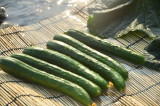
Well known leaf vegetable for an ingredient of salad. Good
quality lettuce is produced by a combination of open-field and tunnel cultivations, making the most of the warm climate with little rain, well-drained soil and irrigation water from Yoshino River. The fresh and crispy texture is enjoyed by eating raw. The crispy texture lasts even if its thick leaves are cooked such as in stir fry, soup and hot pot. More than 90 percent of a lettuce is water, so it is a low-calorie food, yet it also contains other nutrients such as vitamins, dietary fiber and iron, so it is good for your diet.
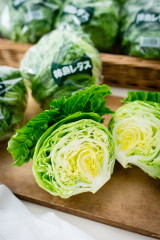
Tokushima’s spring onion (green onion), which is excellent in color, luster, sweetness and texture, has a sixty-year history and is one of the best local vegetables. It is cultivated all year round in excellent quality sandy soil which is well-drained, yet has good water-retention. Spring onion which slowly absorbs natural minerals and nutrition from the most suitable soil has a rich flavor. Even being chopped, it still maintains a crispy texture. As it is neither too thick nor too thin, it comes in handy for a variety of cuisine such as hot pot cooking, grilling and as condiments.

Vivid and lustrous fruits, comfortably firm texture and
balanced sweetness and sourness. Cherry tomatoes nurtured by the abundant water of Yoshino River come in handy for a variety of dishes such as salad, stew and pasta sauce. Not only does it have good taste, it is rich in nutrition. Its beautiful red color means that it has plenty of lycopene which is said to be an antioxidant and good for skin.
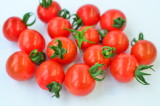
Edamame bean is a young soya bean which is harvested earlier and is also called ”meat of the field”. It is because it is rich in protein famous for the main nutrition of ordinary soya bean. It is also rich in vitamin C, compared to ordinary soya bean. Edamame bean has the beneficial advantages of both pulse and vegetable. In Tokushima Prefecture, it is carefully cultivated along Yoshino River, mainly in Tokushima City, Itano District and Myozai District, the soil of which is well-drained.
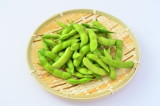
Tokushima produces early-picked bamboo shoot which is
harvested between December and February. Its size is smaller, as it is picked earlier than the usual harvest season. However, its unique flavor and crunchy texture are characteristic. In contrast, bamboo shoot which is picked between March and April has a softer texture. It is said that a bamboo shoot with yellow or yellow-green tip has less harsh after taste, as it had less sunlight. To produce good quality bamboo shoots, thorough management of main bamboo plants and frequent fertilization are carried out in the production area.

Enjoy its crispy texture. Tokushima mainly produces Kankan-musume, a brand which boasts its sweet flavor like a fruit and yellow and white bicolor, and Gold rush, another brand which boasts large-size grains and juicy taste. The peak harvest period is from the beginning of June to around the 20th of June. They are harvested from 4:30 in the morning so that their sweetness will not be lost, and freshly picked sweet corn is sent to the markets.

It is a true summer vegetable, as the hotter the day is, the
bigger it grows. It is cultivated a lot in the southern part of the prefecture where there is much rainfall. In hot days, it grows rapidly, and its fruits grow straight in a beautiful shape. Its cross-section has a pentagonal shape with a vivid contrast of green edges and white seeds. You can eat it in various ways: lightly boiled, cooking in a soup, putting on salad. Rich in vitamins, folic acid and dietary fiber, so top up the ”slimy power” when you feel summer heat fatigue.
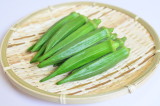
Mange tout is picked before they becomes green peas. It is a
vegetable that its pods can also be eaten with a crunchy texture. It is cultivated a lot in the west of the Tokushima Prefecture where it is blessed with clear water of Yoshino River. Many people think that spring is the harvest season; however, the brand Misasa, a mange tout with white flowers, is seeded in August to be harvested in autumn, and is also marvelous. Straight and firm pods with vivid green color are so beautiful that the demands from restaurants is very high. Its succulent texture is also outstanding.

It is a vegetable high in beta-Carotene and can have a crop
throughout the year, as its cultivation period is as short as three weeks, and it is resistant in various environments. One of the most nutritious vegetables. In particular, those which have strong stems and vivid green leaves contain anti-oxidant, good for health and beauty. It also contains as much calcium as cow’s milk! You can take calcium healthily, enjoying the taste of Japanese mustard spinach. When cooking, preparatory boiling is not required, as it has less harshness, so you can prepare dishes, making the most of its characteristics without losing its nutrition.
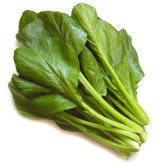
Copyright © Tokushima Prefecture, All rights reserved.